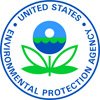Building sustainability and resilience through chemistry
At the AIA Conference on Architecture this week, architects, designers and firms are gathering in New York City to share their perspectives, and learn from others, about how to “build a blueprint for better cities” – with a focus on health, resilience and sustainability.
AIA states that “community sustainability goals are fulfilled in large part by an architect’s ability to create practical solutions to the challenges posed by climate change, population growth and the pursuit of more connected, healthier communities.”
American Chemistry Council (ACC) members provide the chemistries for the high-performance products and technologies that enable these practical solutions. From foam insulation materials that help keep buildings warm and save energy, to vinyl wall coverings and sealants that can help ventilation systems work effectively and improve indoor air quality, to plastic pipes that can provide clean water to occupants, chemistry innovations are the “Science Behind Sustainability.”
Here are just a few specific examples of how chemistry can contribute to structural resilience and sustainability in the built environment:
- Building exterior surfaces coated with a thin layer of titanium dioxide nanoparticles not only enable self-cleaning of the building exterior, but may also help clean the surrounding air. Ultraviolet light from the sun reacts with the titanium dioxide, to form reactive hydroxyl radicals that can actively break down pollutants in the air, including nitrous oxide gases and volatile organic compounds.
- Wall insulation can help protect buildings during uncontrollable natural events. Spray polyurethane foam (SPF) is made from a variety of monomeric and polymeric isocyanates, polyethers and acrylics that, when combined, create a lightweight polymer material with high-performing insulating properties. Closed-cell SPF can withstand direct, prolonged contact with floodwater without sustaining significant damage.
- Closed-cell SPF insulation applied to the underside of a roof also can seal and strengthen a roof deck to help prevent water penetration and damage from high winds. Specifically, closed-cell SPF can improve roof racking strength by as much as 300 percent, while also adding air and moisture barriers.
- Durable polycarbonateplastic – the same material used in Kevlar – helps make wall cladding, windows and frames that are shatter-resistant and resilient. Polycarbonate sheets can also be 250 times more impact-resistant than glass, extremely difficult to break, are tested to perform in temperatures ranging from -40°F to 240°F, and can withstand extreme weather such as heavy winds, hail and snowstorms.
- Vegetative, or “green” roofs, constructed using polyethylene water barriers and resin-based adhesives, can enhance a building’s resilience as well as sustainability. Vegetative roofing systems can help keep water out of a building during times of high rainfall and reduce storm water run-off. These systems can contribute to more resilient, sustainable communities by reducing stress on urban sewer systems and decreasing run-off related pollution in waterways.
Learn more about the latest sustainability trends and emerging concepts in the built environment at BuildingwithChemistry.org.


